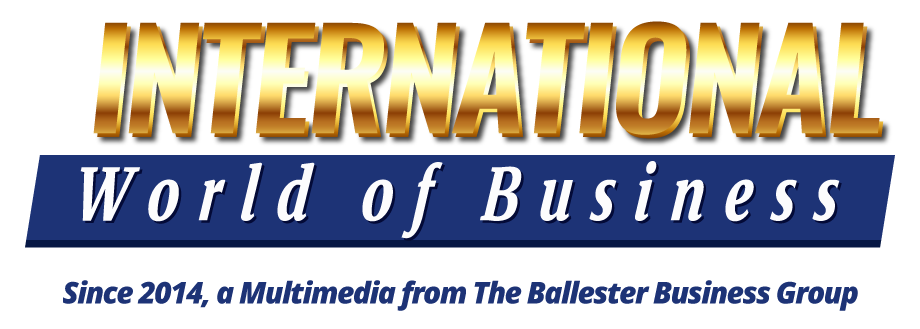DUBLIN–(BUSINESS WIRE)–The “Monoclonal Antibodies Market Size, Share & Trends Analysis Report by Source Type (Chimeric, Murine, Humanized, Human), by Production Type (In Vivo, In Vitro), by Application, by End-use, by Region, and Segment Forecasts, 2022-2030” report has been added to ResearchAndMarkets.com’s offering.
The global monoclonal antibodies market is projected to reach USD 494.53 billion by 2030, at a compound annual growth rate (CAGR) of 11.30%
Increasing research and development activities aimed at the development of novel therapeutic monoclonal antibodies (mAbs) and supportive government initiatives for biologics production are anticipated to drive market growth in the forecast period.
The rising demand for personalized medicine is likely to positively affect the development of therapeutic mAb targeted therapies that are tailored to individual requirements. Moreover, the therapeutic use of mAbs offers several advantages such as fewer adverse effects, specificity of treatment, and large-scale production capabilities, as compared to conventional treatment options, and can significantly drive market growth.
In addition, several government entities are fueling clinical research activities and expanding the scope of applications for mAb therapies. For instance, in June 2022, the National Institutes of Health launched clinical trials for the evaluation of dupilumab, for the reduction of asthma attacks and the improvement of lung functionality in children.
Similarly, in March 2021, the U.S. Department of Health and Human Services invested USD 150 million in increasing patient access to monoclonal antibody therapeutics for COVID-19. Such initiatives are expected to increase the adoption of monoclonal antibodies and strengthen growth prospects.
Furthermore, technological advancements in genetic engineering, DNA cloning, and various peptide and protein display technologies have led to the generation and optimization of recombinant mAbs. Demand for such recombinant antibodies is driven by increasing commercial prospects and quality requirements that may not be fulfilled by hybridoma technologies. Hence, with the increasing commercial viability of recombinant technologies, the market is expected to witness significant growth.
The COVID-19 pandemic has created several market expansion opportunities by fueling the development of several mAbs directed against the SARS-CoV-2 virus.
As mAbs represent a promising alternative for mitigation of the disease due to their safety and effectiveness, several mAbs such as Eli Lilly’s bebtelovimab, and GlaxoSmithKline & Vir Biotechnology’s sotrovimab have attained emergency use authorizations from the U.S. FDA. Such authorizations are likely to broaden the horizons for the growth of mAbs applications and propel market growth.
Monoclonal Antibodies Market Report Highlights
- By source type, the human mAbs segment held the largest share of 54.07% in 2021 due to the low immunogenicity offered and increasing cancer treatment applications of these antibodies
- In vitro production type held a dominating share of 78.45% in 2021 due to the low contamination levels offered by the technique and the availability of advanced bio-manufacturing capabilities
- The oncology segment dominated the market in 2021 due to the rising number of approvals for mAb cancer therapeutics and increasing scientific and patient awareness about such therapies
- Hospitals accounted for the largest share of the end-use segment in 2021 due to the widespread use of mAbs for cancer treatment in hospitals and increasing healthcare expenditure favoring the adoption of such therapeutics
- North America accounted for 46.2% of the market value in 2021 due to the availability of advanced healthcare infrastructure, high growth in cancer incidence, and local presence of key players such as Pfizer Inc., Amgen, Inc., and Merck & Co., among others
- The Asia Pacific is projected to witness the highest growth rate in the forecast period due to the availability of a large patient pool for cancer treatment and expanding the scope of clinical research prospects for mAbs.
Key Topics Covered:
Chapter 1 Methodology and Scope
Chapter 2 Executive Summary
2.1 Market Outlook
2.2 Market Summary
Chapter 3 Monoclonal Antibodies Market Variables, Trends & Scope
3.1 Market Trends & Outlook
3.2 Market Segmentation & Scope
3.3 Market Driver Analysis
3.3.1 Increasing Incidences Of Chronic Diseases
3.3.2 Technological Advancements
3.3.3 Growing Awareness Levels
3.4 Market Restraint Analysis
3.4.1 High Cost Of Therapeutic Mabs
3.5 SWOT Analysis, by Factor (Political & Legal, Economic, and Technological)
3.6 Porter’s Five Forces Analysis
3.7 COVID-19 Impact Analysis
3.8 Penetration & Growth Prospect Mapping
Chapter 4 Monoclonal Antibodies Market – Segment Analysis, by Source Type, 2018 – 2030 (USD Billion)
4.1 Monoclonal Antibodies Market: Source Type Movement Analysis
4.2 Murine
4.2.1 Murine Market Estimates And Forecast, 2018 – 2030 (USD Billion)
4.3 Chimeric
4.4 Humanized
4.5 Human
Chapter 5 Monoclonal Antibodies Market – Segment Analysis, By Production Type, 2018 – 2030 (USD Billion)
5.1 Monoclonal Antibodies Market: Production Type Movement Analysis
5.2 In Vivo
5.2.1 In Vivo Market Estimates And Forecast, 2018 – 2030 (USD Billion)
5.3 In Vitro
Chapter 6 Monoclonal Antibodies Market – Segment Analysis, By Application, 2018 – 2030 (USD Billion)
6.1 Monoclonal Antibodies Market: Application Movement Analysis
6.2 Oncology
6.2.1 Oncology Market Estimates And Forecast, 2018 – 2030 (USD Billion)
6.3 Autoimmune Diseases
6.4 Infectious Diseases
6.5 Neurological Diseases
Chapter 7 Monoclonal Antibodies Market – Segment Analysis, By End-Use, 2018 – 2030 (USD Billion)
7.1 Monoclonal Antibodies Market: End-Use Movement Analysis
7.2 Hospitals
7.2.1 Hospitals Market Estimates And Forecast, 2018 – 2030 (USD Billion)
7.3 Specialty Centers
Chapter 8 Monoclonal Antibodies Market – Segment Analysis, By Region, 2018 – 2030 (USD Billion)
8.1 Monoclonal Antibodies Market: Regional Movement Analysis
Chapter 9 Competitive Analysis
- Abbott Laboratories
- Amgen Inc.
- Astrazeneca plc
- Bayer AG
- Biogen Inc.
- Bristol Myers Squibb
- Daiichi Sankyo Company, Limited
- Eli Lilly and Company
- F. Hoffman-La Roche Ltd.
- GlaxoSmithKline plc
- Johnson & Johnson Services, Inc.
- Merck & Co. Inc.
- Merck Kgaa
- Novartis AG
- Novo Nordisk A/S
- Pfizer Inc
- Sanofi S.A.
- Thermo Fisher Scientific, Inc.
- Viatris Inc.
For more information about this report visit https://www.researchandmarkets.com/r/cpxi6
Contacts
ResearchAndMarkets.com
Laura Wood, Senior Press Manager
press@researchandmarkets.com
For E.S.T Office Hours Call 1-917-300-0470
For U.S./ CAN Toll Free Call 1-800-526-8630
For GMT Office Hours Call +353-1-416-8900



